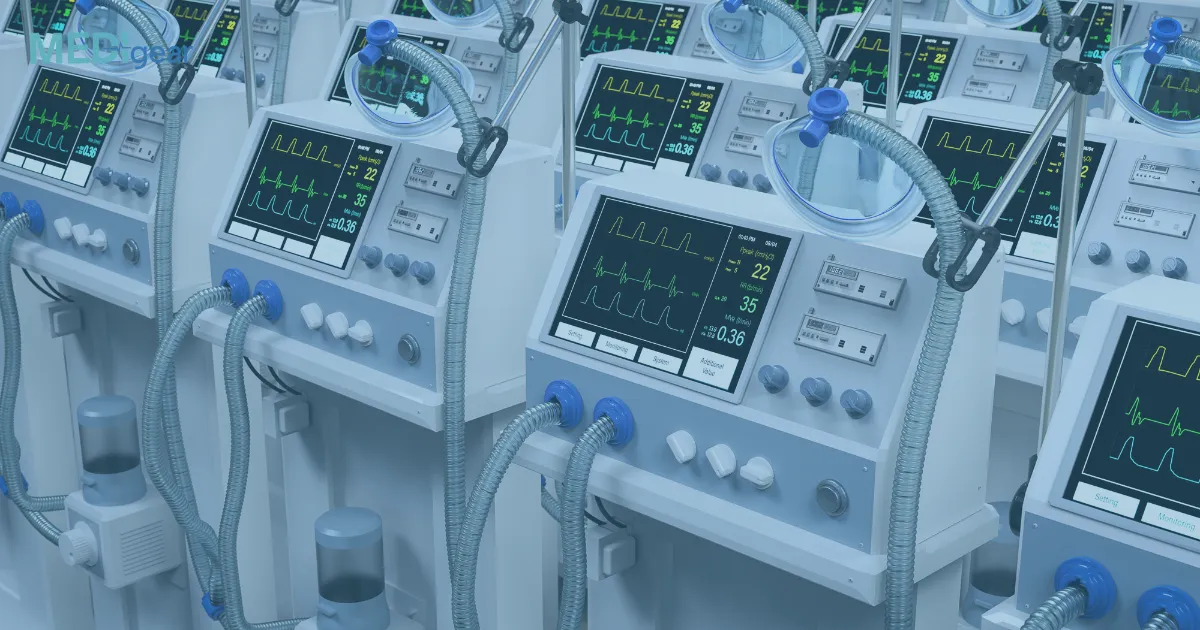In emergency medical care, maintaining a patient’s breathing is a top priority. Ambulances are equipped with portable ventilators that provide life-saving respiratory support during transport. These compact devices are designed to deliver reliable ventilation in unpredictable environments, ensuring patients receive continuous care from the scene of an emergency to the hospital.
What Is a Portable Ventilator?
A portable ventilator is a compact, battery-powered machine that mechanically assists or fully controls a patient’s breathing. Unlike stationary ventilators in intensive care units, portable ventilators are built for mobility, durability, and rapid response in pre-hospital and transport settings.
How Portable Ventilators Work in Ambulances
- Airflow Delivery
Portable ventilators push a controlled flow of air—or a mix of air and oxygen—into the patient’s lungs through an endotracheal tube or mask. They ensure that patients who cannot breathe adequately on their own still receive sufficient oxygen. - Adjustable Ventilation Modes
These devices provide various modes, such as controlled ventilation (fully supporting breathing), assisted ventilation (helping when the patient initiates a breath), and non-invasive support through masks. This flexibility allows emergency teams to match settings to the patient’s condition. - Monitoring and Alarms
Portable ventilators are equipped with sensors that track tidal volume, respiratory rate, pressure, and oxygen concentration. Built-in alarms alert caregivers to problems such as low oxygen supply, disconnections, or airway obstruction. - Battery and Power Management
Since ambulances operate in dynamic environments, portable ventilators use rechargeable batteries with long runtimes and backup systems. This ensures uninterrupted support during transport, even when power sources are limited. - Compact and Durable Design
Designed for use in fast-moving vehicles, portable ventilators are lightweight, shock-resistant, and easy to operate in confined ambulance spaces. Their rugged design ensures performance under emergency conditions. - Integration with Ambulance Oxygen Supply
Most portable ventilators can connect directly to onboard oxygen cylinders, allowing paramedics to deliver precise oxygen concentrations tailored to the patient’s needs.
Benefits of Portable Ventilators in Ambulances
- Maintain life support during critical transport.
- Reduce strain on emergency staff who would otherwise need to provide manual ventilation.
- Enable consistent oxygenation, which is crucial for patients with trauma, respiratory failure, or cardiac arrest.
- Improve survival chances by stabilizing patients before they reach hospital care.
Conclusion
Portable ventilators are vital in ambulance care, providing reliable respiratory support when every second counts. With advanced monitoring, multiple ventilation modes, and robust design, they help emergency teams deliver safe and effective care during transport.
Source: National Library of Medicine – Portable Ventilators in Emergency Care
Disclaimer: This blogpost is for informational purposes only and should not be considered medical advice. Always follow professional medical guidance and manufacturer instructions when using ventilators.






